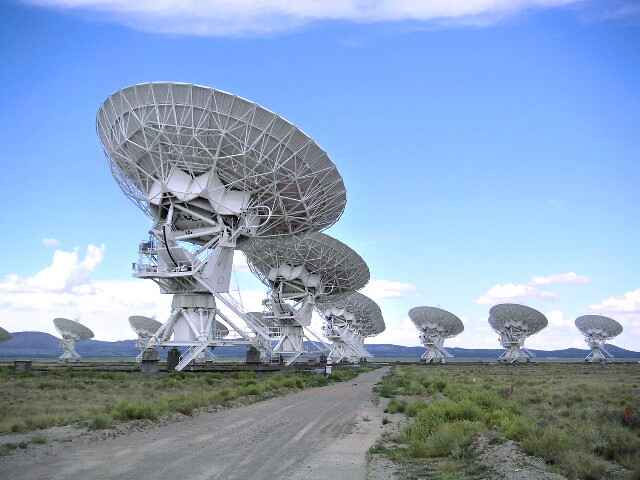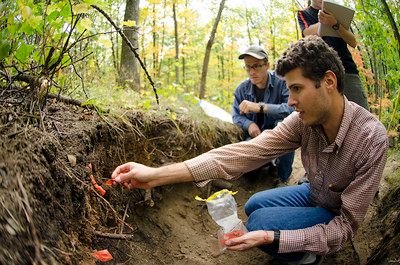Radio Wave Definition, Discovery, Principle and Characteristics
Radio waves are the longest-wavelength components of the EM spectrum, which have variable frequency, light-speed, and multiple applications. This article discusses radio wave definition, discovery, principle and characteristics, as outlined below;
-Radio Wave Definition: 5 Ways to Define Radio Waves
-Characteristics of Radio Waves
Radio Wave Definition: 5 Ways to Define Radio Waves
A radio wave can be defined as an electromagnetic wave with a relatively long wavelength, and low-frequency, which comes last in the electromagnetic spectrum when wave types are arranged in ascending order of wavelength and descending order of frequency [2].
In physics, radio waves are defined mainly based on their electromagnetic attributes, using parameters like frequency, wavelength, and amplitude. Below is an alternative radio wave definition that sheds light on the wavelength and frequency of radio waves;
A radio wave is any electromagnetic radiation-stream which has a wavelength range of 1 millimeter to 100 kilometers; and a frequency range of 3 kHz to 300 GHz, that allow it to be used for communication among other purposes [5].
The above definition outlines two key, physical attributes of radio waves that can be used as identifiers; while mentioning their role in making radio waves suitable for their various uses. In the alternative radio wave definition below, more uses of radio waves are listed;
Radio waves are long-wavelength electromagnetic waves with a broad frequency range, which can be used for various purposes that include; television and radio (AM, FM) broadcasts, wireless IoT network communication, satellite signal transmission, cosmological research, and magnetic resonance imaging.

Next, types of radio waves are mentioned as a theme of the radio wave definition;
A radio wave is the longest-wavelength component of an electromagnetic spectrum, which can be categorized into three types including analogue, digital and hybrid radio waves, based on mode of signal-transmission.
Lastly, the radio wave definition is outlined based in potential dangers of radio waves;
A radio wave is an electromagnetic wave a long wavelength, broad-range frequency and multiple uses; to which prolonged exposure is associated with dangers like; thermal damage of biological tissue, signal interference and disruption, cancer risk exacerbation, flora and fauna mutagenesis, and health symptoms like fatigue and headache [7].
Discovery of Radio Waves
The discovery of radio waves can be attributed to independent researches conducted between late nineteenth and early twentieth centuries.
Scottish scientist and mathematician James Clark Maxwell first discovered radio waves, as a theoretical concept in 1865 [4]. His conception of radio waves was mostly drawn from earlier studies of light energy and electromagnetism, and he made a series of predictions about the basic characteristics of these waves including their frequency, propagation, and ability to undergo reflection and refraction.
The practical discovery of radio waves was achieved by German physicist Heinrich Hertz in 1887 [9]. He produced radio waves in his laboratory using an electrified induction coil, and demonstrated that the waves produced could be detected by a receiving antenna.
Hertz observations validated the earlier concept posed by Maxwell, and formed the basis of all subsequent advancements in radio wave technology.
One of these advancements was the development of the first radio receivers and transmitters by Italian inventor Guglielmo Marconi, in the 1890s [1]; which drew mostly from the transmission-reception concept demonstrated by Hertz.
The same concept aided the understanding of radio astronomy, based on cosmological radio wave-interferences observed by Karl Guthe Jansky in 1932 [8].

How Radio Waves Work
Radio waves work by a simple three-step process that includes; electron agitation, contactless wave-transmission, and wave reception. Each of these is discussed briefly below;
1). Electron Agitation (in explanation of How Radio Waves Work)
Electron agitation is the first stage in the radio wave working principle, and accounts for the release of signals by radio transmitters.
Basically, radio waves are generated from sounds (and images) which are electronically modified to produce what is called a 'carrier wave'.
This carrier wave results from modulation and amplification of sounds received by electronic sensors.
Modulation may also be referred to as encoding, and is necessary in order to define the frequency or wavelength range in which radio signals are transmitted.
Two types of radio wave modulation exist; Frequency Modulation (FM) and Amplitude Modulation (AM). These involve altering/modifying the frequency and amplitude of sound signals respectively, to enable them be detected easily by an antenna operating within their range [6].
The modulated and amplified waves are then broadcast by sending them through a conductive transmitter component, so that the waves cause electrons in the transmitter to oscillate.
This electron-oscillation generates an electromagnetic field around the transmitter, from which EM waves are emitted by radiation, into the surroundings.
2). Contactless Wave-Transmission
Contactless wave-transmission describes how radio waves travel through space after they have been released by an electrified transmitter.
Generally, radio wave-propagation occurs along a straight-line path, and at a velocity equivalent to that of visible light [3].
The travel range of radio waves is geographically limited, so that signals broadcast from a given location can be detected only within a definite areal circumference surrounding that location or point.
To increase distance of propagation, satellite transmitters can be used to relay the radio waves, so that some signals can travel over several million miles.
3). Wave Reception (in explanation of How Radio Waves Work)
Wave reception occurs when the traveling radio waves strike a receiver, which is also conductive, and often occurs in the form of an antenna.
On striking the receiver, the radio waves cause its electrons to vibrate according to its frequency and/or amplitude. This enables the receiver to detect the signals in form of information that has been encoded into the radio waves through modulation.
The particular information detected by a receiver depends on its frequency/amplitude tuning. Any connected processing device, like an electronic sound system, may then produce an output of the signals detected.
Characteristics of Radio Waves
Characteristics of radio waves are;
1). Broad frequency range
2). Long wavelength
3). Contactless, long-distance propagation
4). Material penetrability
5). Electrical and magnetic field influences
6). Modifiable frequency
7). Reflection, refraction, diffraction capabilities
8). Velocity of light
Conclusion
A radio wave is a long-wavelength electromagnetic wave that travels at the speed of light, and can be used to transmit audio and visual information.
Radio waves were discovered theoretically by James Maxwell in 1865; and practically by Heinrich Hertz in 1887.
Radio waves work in three steps that include;
1. Electron Agitation
2. Contactless Wave-Transmission
3. Wave Reception
Characteristics of radio waves are; broad frequency range, long wavelength, contactless long-distance propagation, material penetrability, electrical and magnetic field influences, modifiable frequency, velocity of light, reflection, refraction and diffraction capabilities.
References
1). Aggrawal, H.; Chen, P.; Assefzadeh, M.; Jamali, B.; Babakhani, A. (2016). "Gone in a Picosecond: Techniques for the Generation and Detection of Picosecond Pulses and Their Applications." IEEE Microwave Magazine 17(12):24-38. Available at: https://doi.org/10.1109/MMM.2016.2608764. (Accessed 28 March 2023).
2). Braybury, L. (2018). "7 Types of Electromagnetic Waves." Available at: https://sciencing.com/7-types-electromagnetic-waves-8434704.html. (Accessed 28 March 2023).
3). Chapagain, N. P. (2014). "Radio wave communication system and mobile phone." Available at: https://www.researchgate.net/publication/322602642_Radio_wave_communication_system_and_mobile_phone. (Accessed 28 March 2023).
4). Dwivedi, B. (2003). "James Clerk Maxwell and his equations." Resonance 8(5):4-16. Available at: https://doi.org/10.1007/BF02867125. (Accessed 28 March 2023).
5). Lucas, J. (2019). "What Are Radio Waves?" Available at: https://www.livescience.com/50399-radio-waves.html. (Accessed 28 March 2023).
6). Micali, G.; Aquino, G.; Richards, D. M.; Endres, R. G. (2015). "Accurate encoding and decoding by single cells: amplitude versus frequency modulation." PLoS Comput Biol. 2015 Jun 1;11(6):e1004222. Available at: https://doi.org/10.1371/journal.pcbi.1004222. (Accessed 28 March 2023).
7). Miller, A. B.; Sears, M. E.; Morgan, L. L.; Davis, D. L.; Hardell, L.; Oremus, M.; Soskolne, C. L. (2019). "Risks to Health and Well-Being From Radio-Frequency Radiation Emitted by Cell Phones and Other Wireless Devices." Front Public Health. 2019 Aug 13;7:223. Available at: https://doi.org/10.3389/fpubh.2019.00223. (Accessed 28 March 2023).
8). Robertson, P. (2015). "John Bolton and the nature of discrete radio sources." Available at: https://www.semanticscholar.org/paper/John-Bolton-and-the-nature-of-discrete-radio-Robertson/37a59bb9ecc9570d9f3cdc8281754390ad0d78e5. (Accessed 28 March 2023).
9). Wlesbeck, W.; Clchon, D. J. (1995). "The link from Heinrich Hertz to modern communication." 1995 25th European Microwave Conference, Bologna, Italy, 1995, pp. 886-894, Available at: https://doi.org/10.1109/EUMA.1995.337091. (Accessed 28 March 2023).





